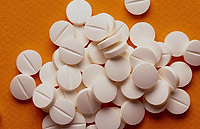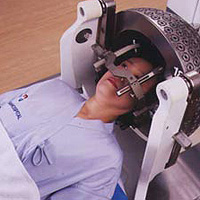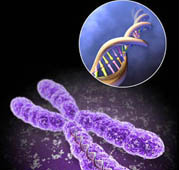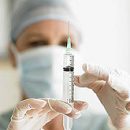What is zhilber syndrome, symptoms, diagnostics, which measures are being taken by gastroenterologists and therapists. Required diet and analyzes when szh.
Content
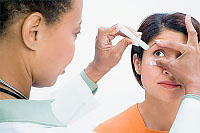 Zhilbera syndrome (s) refers to genetic diseases and leads to a violation of the exchange of bilirubin, which can provoke benign unconjugated hyperbilirubine. Bilirubin exchange is violated due to lack of glucuronlontransferase — Special hepatic enzyme. This also provokes an increase in the level of unbound bilirubin in the blood and the occurrence of jaundice. During pregnancy, Zhilbera syndrome, as a rule, does not affect the fruit. The presence of SZ increases the risk of developing gallway disease.
Zhilbera syndrome (s) refers to genetic diseases and leads to a violation of the exchange of bilirubin, which can provoke benign unconjugated hyperbilirubine. Bilirubin exchange is violated due to lack of glucuronlontransferase — Special hepatic enzyme. This also provokes an increase in the level of unbound bilirubin in the blood and the occurrence of jaundice. During pregnancy, Zhilbera syndrome, as a rule, does not affect the fruit. The presence of SZ increases the risk of developing gallway disease.
Symptoms of Zhilbera syndrome
The symptoms of the housing syndrome manifest themselves more pronounced under stress, physical exertion, malnutrition, after viral diseases and due to alcohol use and some drugs. For Zhilbera's disease, characteristic:
- asthenia;
- The yellowing of the scler and mucous degrees (the yardiness of the skin is not always observed);
- liver pain;
- elevated level of bilirubin in the blood;
- Violation of the stomach and painful digestion.
Zhilbera syndrome is congenital, in this case, the symptoms are manifested between 12 to 30 years. The second type of syndrome — Postgepatitis hyperbilirubinemia, manifested after transferred viral hepatitis. In the second case, it is necessary to carry out differential diagnostics in order not to confuse SZH with chronic hepatitis.
Diagnostics of Zhilbera syndrome
For diagnostic research and planning of therapeutic measures, it is necessary to refer to the therapist, genetics, hematologist and gastroenterologist (hematologist). If the Zhilbera syndrome is suspected, in addition to the collection of anamnesis and physical examination, the following diagnostic methods are assigned:
- General blood analysis — When SZH is observed an increase in hemoglobin (>160 g / l), possibly the appearance of reticulose and decrease by the osmotic resistance of erythrocytes.
- Blood chemistry — Bilirubin can reach 6 mg / dl, but basically does not switch the border 3 mg / dl. Parameters that define the function of the liver remain normally. Alkaline phosphatase can increase.
- PCR — Genetic marker Szh — The number of tapels in the Promotor chain of the UGT1A1 gene.
- Ultrasound of the gallbladder and duodenal probing — Almost all patients with SZ are observed changes in the biochemical composition of bile.
- Biopsy liver — Possible pathological changes in the body.
- Sample with starvation — If there is no malnutrition, it entails an increase in bilirubin in serum.
- Sample with phenobarbital — The use of phenobarbital on the background of SZh contributes to a decrease in the level of non-conjugated bilirubin.
- Sample with nicotine acid when szh provokes an increase in the content of non-conjugated bilirubin. The same reaction occurs when the rifampicin is introduced.
The doctor may appoint additional research and conducting differential diagnostics of SZH with other hyperbirubinemia.
Treatment of Zhilbera's disease
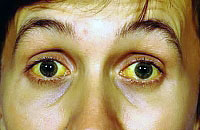 The forecast is quite favorable, due to the fact that the housing disease is relatively safe and special treatment is not required (it is rather a household character). The basis of therapy is compliance with the normal regime, labor and recreation. During exacerbations, you need to comply with diet number 5 (refusal of oily and fried food, alcohol), take vitamins and choleretics. Therapist may assign a course of hepatoprotectors. It is important to remember that you should not resort to warm physiotypers. The treatment of SZh is aimed at restoring the normal level of uridindiphosphate glucuronlontransferase (liver enzyme) and stabilization of general patient well-being.
The forecast is quite favorable, due to the fact that the housing disease is relatively safe and special treatment is not required (it is rather a household character). The basis of therapy is compliance with the normal regime, labor and recreation. During exacerbations, you need to comply with diet number 5 (refusal of oily and fried food, alcohol), take vitamins and choleretics. Therapist may assign a course of hepatoprotectors. It is important to remember that you should not resort to warm physiotypers. The treatment of SZh is aimed at restoring the normal level of uridindiphosphate glucuronlontransferase (liver enzyme) and stabilization of general patient well-being.
It is necessary to consult with the therapist and hepatologist, which drugs can be applied against the background of the zhilber syndrome, and from which it will have to abandon (for example, anabolic steroids, glucocorticoids, caffeine and paracetamol can enhance the manifestation of jaundice).



